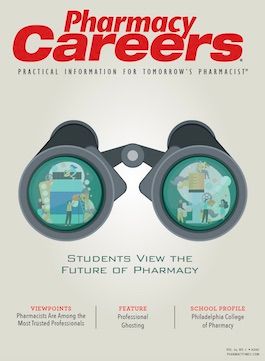The One Skill Employers Want: The Ability to Change
Whatever the practice setting, the pharmacist’s day-to-day responsibilities and activities are changing.
PHARMACY PRACTICE IS CHANGING FOR THE BETTER
Whatever the practice setting, the pharmacist’s day-to-day responsibilities and activities are changing. Movement from dispensing and filling orders to providing services in support of other care team members, or even independent of other care team members, is inevitable. With this shift comes incremental—but ultimately radical—changes in workflow, skills application, and performance measurement. For pharmacists who are early in their careers, it will not seem like change; for others, it will be an uncomfortable, exciting, difficult, and rewarding shift.
BUT CHANGE ISN’T EASY
Just ask a smoker. Aside from the chemical addiction (the pharmacy industry’s chemical addiction might be considered product-based reimbursement), smoking is habit forming. Every day, like clockwork, smokers reach for that tobacco product to relieve an oral fixation or enjoy that regular social interaction with other smokers. If you’ve ever looked down your nose at a person who vapes, think about how many of us cannot live without a morning coffee. I’ve seen lines at the coffee shop that are 30 persons deep. That’s addiction, too; that’s a habit. It can be a difficult behavior to change or give up.
IMPLEMENTORS FOR SUCCESSFUL CHANGE
Transformational change comes in many domains, from financing and supply chain to workflow, care delivery, and culture. Fortunately, there are experts who study change. Implementation scientists are finding their way into collaborations or faculty positions within schools of pharmacy, and for good reason: the profession of pharmacy does not suffer from a lack of innovation, but it does suffer from scaling innovations to work across 60,000 pharmacies, thousands of hospitals, tens of thousands of ambulatory clinics, and nearly 1500 long-term care pharmacies. Each of those locations needs a change agent that is capable of implementing a new financial, supply chain, workflow, or care delivery process. A lot must go as planned, and that is most likely to happen when change is led by a focused implementor who
can withstand unwanted disruption from teammates.
QUICK PATH TO EMPLOYMENT, LEADERSHIP
This type of large-scale change offers opportunities for the young pharmacist: Turn your greatest weakness into an asset. Your lack of traditional workflow and operations experience allows you to be unencumbered by “workflow regression to the mean,” where new innovations are either ignored or winnowed away toward the “usual way we do it.” Become an expert in a service line. If you do an ambulatory care residency, make the implementation of a new service part of your endcap project. If you get a
degree in health systems administration, come up with a new way to validate 340b claims or schedule pharmacists for shifts. If you want to work in a community pharmacy, learn how to become accredited in diabetes self-management, and put together a business plan to justify it. With all of these options, make sure you show your prospective employer how you plan to implement the service or process throughout the care setting—that is what will set you apart.
NEW WORKFLOW OR PROCESS IMPLEMENTATION SKILLS IN HIGH DEMAND
While implementation science as a formal field of study involves the “the scientific study of methods to promote the systematic uptake of research findings and other evidence-based practices into routine practice, and, hence, to improve the quality and effectiveness of health services,”1 principles of implementation are found in many learning communities, including engineering, business management, and public administration. While professors often speak at length about the need for change and implementation principles, the plan for making the change has not historically been part of doctor of pharmacy curricula. That doesn’t mean you can’t learn to adopt
simple change principles:
- Make the change purposeful. Does it save lives? Make patients healthier? Make the pharmacy more sustainable?
- Health care team members are like patients; they need coaching, reassurance, motivational interviewing, and activation to accept change.
- If you cannot measure it, you cannot manage it. Find a way to measure the intended result with a SMART (Specific, Measurable, Attainable, Relevant, and Timely) data stream.
- SMART reports should be accessible to management and owners.
- The more radical the change, the more incremental the parts of the process should be deployed.
- Provide a clear roadmap and assign specific roles for your fellow care team members and their assistants to follow.
- Celebrate wins. We are all human and want to feel as if we’ve achieved something meaningful. When we do, we like acknowledgement.
TROY TRYGSTAD, PHARMD, PHD, MBA, is vice president of pharmacy programs for Community Care of North Carolina, which works collaboratively with more than 1800 medical practices to serve more than 1.6 million Medicaid, Medicare, commercially insured, and uninsured patients. He received his PharmD and MBA degrees from Drake University and a PhD in pharmaceutical outcomes and policy from the University of North Carolina. He also serves on the board of directors for the American Pharmacists Association Foundation and the Pharmacy Quality Alliance.
REFERENCE
Eccles MP, Mittman BS. Welcome to implementation science. Implementation Sci. 2006;1(1). doi: 10.1186/1748-5908-1-1.

